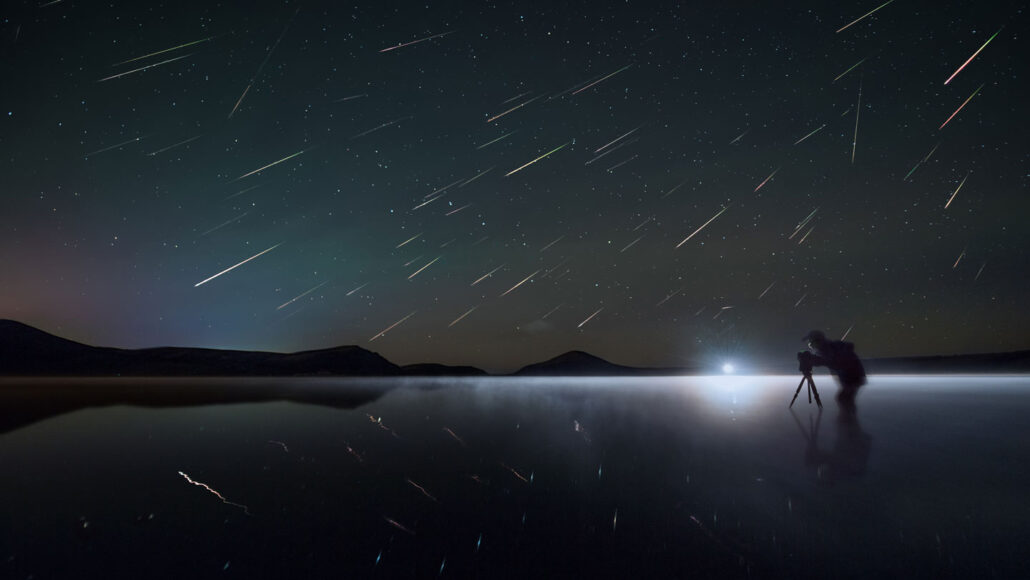Let’s learn about meteor showers
A meteor shower occurs when Earth passes through a stream of comet or asteroid debris

The Perseid meteor shower, seen here at Lake Duolun, China, occurs when Earth passes through a stream of debris left by the comet Swift-Tuttle.
Haitong Yu/Getty Images
If you peer up at the sky on a clear night in October, you may glimpse the Orionid meteor shower. This downpour of falling stars happens every autumn. For about a month, Orionid meteors cascade into the atmosphere, appearing as bright streaks in the sky. The light show is most intense around October 21.
The Orionid meteor shower is just one of dozens of meteor showers that happen each year. A meteor shower occurs when Earth passes through a field of debris on its orbit around the sun. This debris may be shed by a comet, asteroid or other object. The Orionids, for instance, happen when Earth moves through a dusty trail left by the comet Halley.
When Earth plows through such a stream of debris, space rocks tumble into the atmosphere. The rocks glow as air drag heats up and ignites them. Most meteors completely burn up in the atmosphere. The rare rock that hits the ground is called a meteorite. The show starts slowly, as our planet enters the debris field. It then peaks when Earth passes through the most crowded part of the field, and again trails off as we leave.
The shooting stars in a meteor shower will appear across the sky. But they all seem to zip outward from the same spot. That’s because all of the rocks in a meteor shower are hurtling toward Earth from the same direction. Their point of origin in the sky is called the radiant. For example, the Orionids’ radiant is in the constellation Orion. That gives the meteor shower its name.
To view a meteor shower, it’s best to go somewhere with a wide view of the sky, far from light pollution. No need to use binoculars or a telescope. Those will limit your field of view. Just sit back, relax and keep your eyes peeled. With patience and a little luck, you just might catch a falling star.
Want to know more? We’ve got some stories to get you started:
Explainer: Understanding meteors and meteor showers Each meteor shower has its own unique flare. Here’s where different showers come from, why they look the way they do and how to observe them. (12/13/19) Readability: 6.5
Explainer: Why some clouds glow in the dark Some meteors create eerie, night-shining or “noctilucent” clouds. Here’s how. (8/2/2019) Readability: 7.7
Catch a ‘shooting star’ this month — and most others The Geminid meteor shower of December is perhaps the most spectacular of the year. Discover the origins of these meteors and how to view them. (12/11/2018) Readability: 6.5
Explore more
Scientists Say: Asteroid, meteor and meteorite
Scientists Say: Light pollution
Explainer: What are asteroids?
On the lookout for micro-missiles from space
A meteor explodes over Michigan
Hot on the trail of Antarctic meteorites
Meteorites likely wiped out Earth’s earliest life
Asteroids: Avoiding an Earthly smashup
Catch a ‘falling star’ with the smartphone in your pocket
Activities
Ready to get out there and catch sight of some falling stars? EarthSky’s 2021 meteor shower guide describes when and how to see different meteor showers that will appear through the end of the year.
Not all meteor-related fun requires staying up until the wee hours of the morning. Check out Space Rocks! A Meteorite Board Game from the Lunar and Planetary Institute. Players take on the role of meteors from different celestial bodies and race to Antarctica, where they can be found and studied by scientists.







